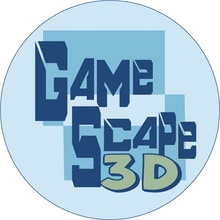Introduction
3D printing has taken the industry by storm, and like other industries, the food industry has also been affected by 3D printing technology. According to research and markets, the tech food industry is expected to reach $ 250 billion by 2022. Amazingly, 3D printing has helped in opening new avenues in the food industry that were unknown before. For instance, the development of new food groups is an innovative concept that has the potential to revolutionize the food market in the world. Also, 3D printing has greatly enhanced the ease with which the chefs can develop 3D printed food products, with special designs, keeping intact the great taste of the product.
3D printed food is a culinary application of 3D printing technology like extrusion 3D printing.
The ingredients used in 3D food printing are in the forms of crystals or paste and are fed into the printers in the form of cartridges or syringes. Currently, extensive research is underway for the application of 3D printed food in the various segments of food and other industries.
Let’s have a look at the latest trends of 3D printing in the food industry.
The Trends of 3D Printing in the Food Industry
3D Printed Fruits by Dovetailed Design Studio
Dovetail Design studio, in collaboration with Microsoft, created the amazing 3D printer with the technology to 3D print fruits. The printer used a technique known as “spherification”. The technique is a molecular printing technology popular in the 3D printed food industry.
The studio used the technology to print fruits. Interestingly, the flavors and colors of the fruits are also highly customizable. The printer uses fruit juice and alginate to develop the different flavors in the fruit.
Experts considered this to be a great step in overcoming food shortages and providing fruits out of season to the consumers.
The Art of Making 3D Printed Confectioneries

Dinara Kasko is perhaps more than a chef. She is a pure artist. Her wonderfully designed pastries are not only delicious to eat, but they are also a treat to watch. She creates innovative plastic molds that are exquisite and gives her pastries a delicious look.

Also, the ChefJet printer by 3D systems is a pioneer in making delicate confectioneries. We assure you that you will be awestruck seeing the delicate designs produced from the fine-grain sugar.
Chocolate Printing

We understand that chocolate is your favorite food, so we are not leaving it out. In the chocolate realm, 3D systems have come up with their CocoJet Chocolate printer. This chocolate printer is designed especially to create great and delicate 3D chocolate designs.
Also, CHOCOL3D have chipped in with their universal chocolate extruder. This extruder can help chefs and chocolate lovers in creating unique chocolate designs.
Healthy Food with Foodini
The foodini printer by natural machines is perhaps a great first step towards 3D printing healthy food. With this hi-tech 3D printer, people can now select the exact proportion of ingredients they want in their meal. For instance, the printer allows you to select the amounts of Carbohydrates, Fats and Proteins that you want to add to your meal.

SmoothFoods for the elderly
Another interesting application of the 3D printed food is the Smooth Food that is served to the elderly in a German Nursing home. Biozoon produces mashed and chewable food for the elderly. by using 3D printing technology
The ingredients for the food are pre-loaded in the form of capsules, and the final product is put together with edible glue.
Food Printing for Hobbyists
Regardless of the 3D food printers’ price in the market, you can always take inspiration from Dinara Kasko and create exquisite plastic molds for making unique dishes. And as we know that creating plastic molds is easy and you can start off today with these top ten 3D printers under $ 350.
Another great way to start-off your 3D food printing hobby is by using the CHOCOL3D extruder. This amazing chocolate extruder is compatible with all the major 3D printer brands like Prusa, Anet, Creality, Tevo, Unimaker, Geeetech, etc. The extruder is made from Almunium and is covered with a protective layer of titanium nitride that keeps the food protected from the environment during the printing process.

CHOCOL3D also offers other accessories that help you prepare the chocolate for unique and creative designs.
In case you are looking for a cheap 3D printer for the food market to start with, then here are two of the most affordable options available in the market.
- Micromake Food 3D Printer – $ 999
- PanakeBot 2.0 – $ 300
The Future of 3D Printing in the Food Industry
The 3D printed food technology is in its nebulous stage, but signs are indicating a positive growth in the near future.
Let’s have a look at the expected uses of 3D printed foods in the future
Food For Astronauts
Star Wars’ replicator machine that can produce food out of everything was, after all, not such a far-fetched theory.
In this regard, NASA has been working in collaboration with systems and materials to overcome the issue of life support during extra long-haul missions, including a trip to Mars. Interestingly they have provided a solution with a 3D Pizza Printer. The printer can provide the necessary nutrition for the Astronauts by using powdered ingredients.
Preparing a Healthy Diet
The day is not far away when you might be printing breakfast while you are still in bed. The concept of healthy food has already been presented by Foodini, but the technology is still working its way up from the incubator to make it a more precise and usable product.
3D Printed Meat
We might be entering into an era where we will not even have to slaughter an animal to eat meat. Jet Eat is a startup that is planning to print meat by using the additive manufacturing process. They will be using the necessary ingredients that naturally occur in meat. The start-up also claims that the taste of the meat will be the same as that of original meat.

“Modern Meadow” is another company making significant advancement in this regard. The company is planning to produce meat using stem cells. Amazingly, the process includes the use of “bio-ink” that is splattered with the help of a special nozzle.
Conclusion
The various 3D food printing start-ups are showing great innovation. As a result, it is expected that the 3D printed food market will grow even more rapidly now. Further, most of the new start-ups with great 3D food ideas are hobbyists. These hobbyists have an interest in 3D printing technology and tweak it to their requirements. Having said this, there is still a high level of initiative, skill, and investment required to take this project to the next level. In case, you want to become a part in taking the 3D printed food to the next level please contact us for ideas and sharing your stories.
The post 3D Printing in the Food Industry appeared first on Inov3D.




